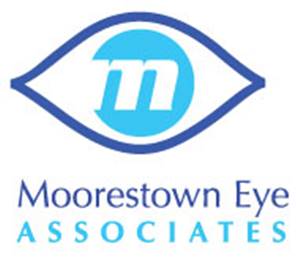Dry eye syndrome is a common condition that can significantly affect your quality of life, causing discomfort and sometimes impairing vision. At Moorestown Eye Associates, we understand the challenges that come with dry eye, and we're here to provide you with effective strategies to manage and alleviate your symptoms. Here are our top tips for dealing with dry eye.
Understand What Causes Dry Eye
Dry eye can result from several factors, including aging, medication side effects, environmental conditions, long periods of screen time, and underlying health issues. Understanding what triggers your dry eye is a crucial step in managing the condition effectively.
Keep Your Eyes Moist
One of the simplest ways to combat dry eye is to keep your eyes moist:
- Use Artificial Tears: Over-the-counter artificial tears can provide significant relief. Use them regularly, not just when you feel discomfort.
- Install a Humidifier: Adding moisture to the air in your home or office can help prevent your tears from evaporating too quickly.
- Stay Hydrated: Drinking plenty of water throughout the day helps maintain overall hydration and supports tear production.
Modify Your Environment
Your daily environment can have a big impact on your eyes:
- Reduce Air Movement: Avoid direct air from fans, air conditioners, or heaters blowing towards your face, as this can increase tear evaporation.
- Control Light and Glare: Use soft lighting and adjust screen settings to reduce eye strain. Consider anti-glare screens for your computer or devices.
- Take Breaks During Screen Time: Follow the 20-20-20 rule: every 20 minutes, look at something 20 feet away for at least 20 seconds to reduce eye strain and give your eyes a rest.
Dietary Adjustments
Incorporating certain nutrients into your diet can help improve tear quality and reduce symptoms of dry eye:
- Increase Omega-3 Fatty Acids: Foods rich in omega-3s, such as fish, flaxseeds, and walnuts, are known to support healthy tear production.
- Eat More Antioxidant-Rich Foods: Vegetables and fruits high in antioxidants can help combat inflammation associated with dry eye.
Consider Advanced Treatments
For more severe cases, additional treatments might be necessary:
- Prescription Eye Drops: These can help increase tear production or reduce inflammation.
- Punctal Plugs: Tiny devices inserted into tear ducts to block drainage can increase the eye’s tear film and surface moisture.
- Intense Pulsed Light Therapy (IPL): Used to treat the eyelid inflammation that can contribute to dry eye.
Practice Good Eyelid Hygiene
Maintaining eyelid cleanliness is essential, especially if you have blepharitis, which can exacerbate dry eye:
- Use a Warm Compress: Gently applying a warm compress to your eyes can help loosen debris and unclog oil glands in your eyelids.
- Eyelid Scrubs: Special eyelid cleansers or baby shampoo diluted with water can be used to gently scrub your eyelids.
When to See an Optometrist
If your symptoms persist or worsen despite these measures, it’s important to consult with an optometrist. At Moorestown Eye Associates, we can offer a more thorough examination, diagnose underlying causes, and recommend more specific treatments tailored to your needs.
Choose Us for Managing Dry Eye
Dry eye doesn’t have to disrupt your life. With the right strategies and support, you can manage your symptoms and improve your eye health. At Moorestown Eye Associates, we are committed to providing you with the highest quality eye care. Our team is ready to help you tackle dry eye syndrome with personalized treatments and expert advice.
Are you ready to get relief from dry eye? Book an appointment with Moorestown Eye Associates today and take the first step towards better eye health.


Click here to see which Saturdays we are open.